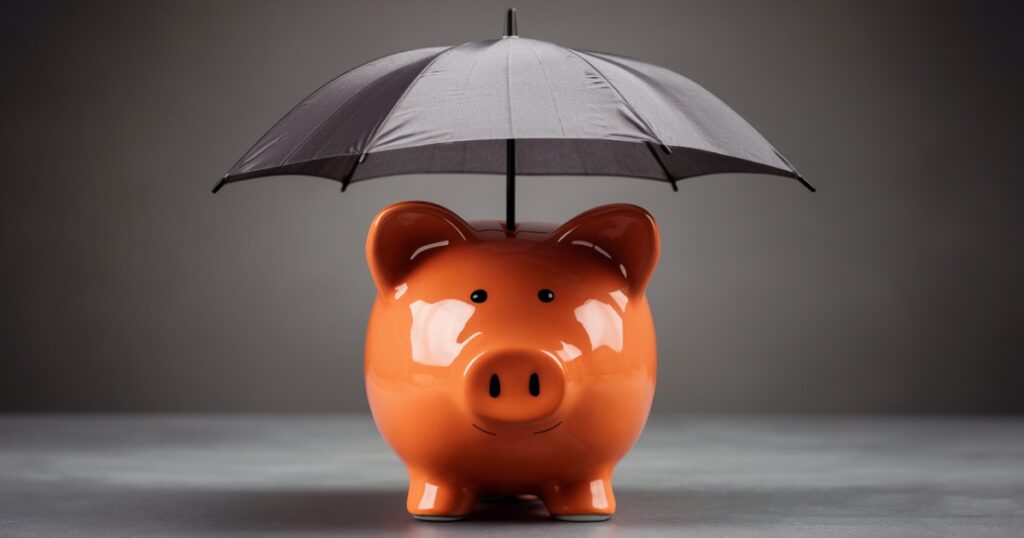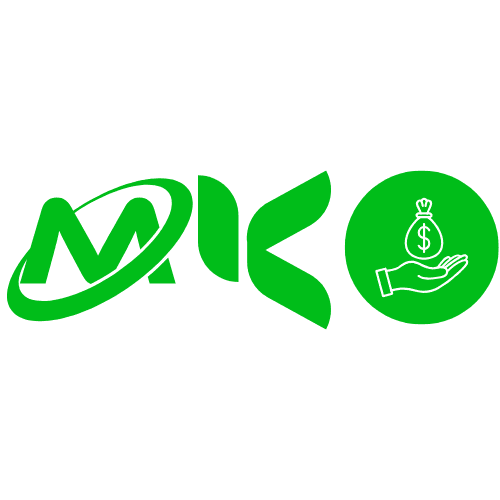
Life is unpredictable, especially in the dynamic economic landscape of Africa. From sudden medical emergencies to unexpected job loss, unforeseen expenses can quickly derail even the most carefully planned budgets. An emergency fund serves as your financial safety net, providing peace of mind and protecting your family from the devastating effects of unexpected financial shocks.
In this comprehensive guide, we'll walk you through everything you need to know about building and maintaining an emergency fund that's tailored to the African context, taking into account local economic conditions, cultural considerations, and practical saving strategies that work for families across the continent.
"An emergency fund isn't just money in the bank – it's freedom from financial anxiety and the ability to face life's challenges with confidence. For African families, it's often the difference between a temporary setback and a devastating financial crisis." - Dr. Elizabeth Banda, Head of Financial Education, Mkopo Express
Why Emergency Funds Are Critical for African Families
African economies often face unique challenges including currency fluctuations, seasonal employment patterns, and limited social safety nets. These factors make emergency funds even more crucial for financial stability and family security.
Medical Emergency
Sudden illness or accident requiring immediate medical attention, surgery, or extended treatment not covered by insurance.
Job Loss
Unexpected unemployment due to company downsizing, economic downturn, or industry changes requiring time to find new employment.
Home Repairs
Critical repairs such as roof damage, plumbing issues, or electrical problems that threaten safety and habitability.
Vehicle Breakdown
Major vehicle repairs or replacement needed for transportation to work, especially in areas with limited public transport.
Family Emergency
Supporting extended family members during crises, funeral expenses, or emergency travel to assist relatives.
Education Expenses
Unexpected school fees, exam costs, or educational opportunities that require immediate financial support.
How Much Should You Save?
The traditional advice of saving 3-6 months of expenses takes on special significance in the African context, where economic volatility and limited social safety nets make financial resilience even more important.
Emergency Fund Calculator
Emergency Fund Milestones
Build your emergency fund progressively with these achievable milestones:
Starter Fund
Cover small emergencies like minor medical expenses or emergency transport
Basic Security
One month of essential expenses for short-term financial stability
Safety Net
Three months of expenses for job loss or major life changes
Full Protection
Complete financial security for extended emergencies or economic downturns
Step-by-Step Emergency Fund Building Strategy
Assess Your Current Financial Situation
Begin by taking a comprehensive look at your finances. Calculate your monthly income, list all expenses, and identify areas where you can reduce spending to free up money for your emergency fund.
Action Steps:
- Track all expenses for one month using a notebook or mobile app
- Categorize expenses as essential (rent, food, utilities) vs. non-essential
- Calculate your true monthly survival budget
- Identify the minimum amount needed if income stopped tomorrow
- Review bank statements for forgotten subscriptions or unnecessary expenses
Set Your Initial Goal
Don't aim for the full 6-month fund immediately. Start with a smaller, achievable goal that builds momentum and confidence. Your first milestone should be $100-500 or one week of essential expenses.
Goal Setting Tips:
- Start with $100 as your first milestone
- Make it specific: "Save $300 by December 31st"
- Break it down: $300 ÷ 10 weeks = $30 per week
- Write down your goal and put it somewhere visible
- Celebrate small victories to maintain motivation
Choose the Right Savings Vehicle
Your emergency fund needs to be easily accessible but separate from your daily spending money. Consider the savings options available in your country and choose based on accessibility, safety, and modest returns.
Automate Your Savings
The most successful emergency fund builders save automatically. Set up systems that move money to your emergency fund before you have a chance to spend it elsewhere.
Automation Strategies:
- Set up automatic transfers on payday
- Use mobile money auto-save features
- Save loose change in a physical jar
- Direct a percentage of any windfall to emergency fund
- Save tax refunds, bonuses, or unexpected income
Find Extra Money to Save
Look for creative ways to boost your emergency fund without dramatically changing your lifestyle. Small changes can add up to significant savings over time.
Money-Finding Strategies:
- Sell items you no longer need
- Take on freelance work or side hustles
- Reduce one subscription or entertainment expense
- Cook at home more often instead of eating out
- Use public transport or walk instead of taxi/uber
- Find cheaper alternatives for recurring expenses
Protect and Grow Your Fund
Once you've built your emergency fund, focus on protecting it from both temptation and inflation. Establish clear rules for when to use it and how to replenish it quickly.
Protection Strategies:
- Keep emergency fund in a separate account
- Define what constitutes a "true emergency"
- Replace any money used immediately
- Review and adjust fund size annually
- Consider inflation when setting long-term targets
Best Savings Vehicles for African Families
High-Yield Savings Account
Traditional bank savings accounts with competitive interest rates, FDIC protection, and easy access to funds.
- Government deposit protection
- Easy online and ATM access
- Competitive interest rates
- No investment risk
Mobile Money Savings
Digital wallets and mobile money platforms offering savings features with instant access and competitive returns.
- Instant access 24/7
- Low minimum balances
- No banking fees
- Integration with daily transactions
SACCO Savings
Credit unions and savings cooperatives offering member benefits, competitive rates, and community support.
- Higher interest rates
- Member-owned and operated
- Lower fees than traditional banks
- Local community focus
Fixed Deposits
Term deposits offering guaranteed returns with penalty-free emergency withdrawal options for urgent needs.
- Guaranteed returns
- Higher interest than savings
- Disciplined saving approach
- Capital preservation
Government Bonds
Treasury bills and government securities offering safe, government-backed returns with varying maturity periods.
- Government guarantee
- Inflation protection
- Tax advantages
- Higher yields than savings
Rotating Savings Groups
Community-based savings circles (chama/tontine) providing disciplined saving and emergency support networks.
- Community accountability
- Regular saving discipline
- Emergency group support
- No banking requirements
Common Mistakes to Avoid
Building an emergency fund is challenging, and many people make mistakes that undermine their efforts. Here are the most common pitfalls and how to avoid them:
Critical Mistakes That Derail Emergency Funds:
- Setting unrealistic goals: Trying to save too much too quickly leads to frustration and abandonment
- Using emergency fund for non-emergencies: Dipping into the fund for vacations, shopping, or planned expenses
- Not defining what constitutes an emergency: Without clear criteria, everything becomes an "emergency"
- Keeping emergency fund too accessible: Money in checking account gets spent on impulse purchases
- Never starting: Waiting for the "perfect time" or more income before beginning to save
- Not replenishing after use: Failing to rebuild the fund immediately after emergency use
- Ignoring inflation: Not adjusting fund size as living costs increase over time
When and How to Use Your Emergency Fund
Having clear guidelines for when to tap your emergency fund is crucial for maintaining its integrity and ensuring it's available when truly needed.
True Emergencies Include:
- Sudden job loss or significant income reduction
- Medical emergencies not covered by insurance
- Critical home repairs (roof, plumbing, electrical)
- Essential vehicle repairs for work transportation
- Family emergencies requiring immediate financial support
- Natural disasters or unforeseen circumstances beyond your control
NOT Emergencies:
- Planned purchases (even if you forgot to save for them)
- Vacations or entertainment expenses
- Investment opportunities or "deals"
- Regular annual expenses like insurance or school fees
- Impulse purchases or shopping desires
- Helping others with non-emergency financial needs
"The power of an emergency fund isn't just in having the money – it's in the peace of mind and confidence it provides. When you know you can handle life's unexpected challenges, you make better financial decisions in all areas of your life." - Sarah Kimani, CEO, Mkopo Express
Rebuilding After Emergency Use
If you've used your emergency fund for a legitimate emergency, congratulations! Your fund served its purpose. Now it's time to rebuild it as quickly as possible.
Rapid Rebuilding Strategy:
- Immediate action: Start rebuilding the day after using emergency funds
- Temporary sacrifices: Cut non-essential expenses aggressively until fund is restored
- Income boosting: Take on extra work or side hustles to accelerate rebuilding
- Windfall allocation: Direct any unexpected income (bonuses, gifts, refunds) to rebuilding
- Gradual restoration: If full restoration isn't possible immediately, at least restore basic protection first
Teaching Your Family About Emergency Funds
Building a successful emergency fund requires family cooperation and understanding. Everyone in the household should understand why the fund exists and agree to protect it.
Family Emergency Fund Education:
- Explain the purpose: Help family members understand how the fund protects everyone
- Set clear rules: Define what constitutes an emergency and who can access the fund
- Involve everyone: Let family members contribute ideas for saving more money
- Celebrate milestones: Acknowledge progress to maintain motivation and commitment
- Lead by example: Demonstrate disciplined saving and responsible money management
Advanced Emergency Fund Strategies
Once you've established your basic emergency fund, consider these advanced strategies to enhance your financial security:
Multi-Tiered Emergency Fund
Create different funds for different types of emergencies:
- Immediate Access Tier: $500-1000 in checking/mobile money for instant needs
- Short-term Tier: 1-2 months expenses in high-yield savings for quick access
- Extended Tier: 3-6 months expenses in certificates of deposit or government bonds
Emergency Fund Plus Strategy
Consider building beyond the traditional 6-month recommendation if:
- You work in a volatile industry with irregular income
- You're self-employed or run a seasonal business
- You have dependents with special needs
- You live in an area prone to natural disasters
- You prefer extra security and peace of mind
Success Story: Building Financial Resilience
"When I lost my job during the economic downturn, my emergency fund gave me three months to find new employment without panic. I was able to be selective and find a better position rather than taking the first offer out of desperation. That emergency fund investment paid for itself many times over."
- Grace M., Nairobi, Kenya
Conclusion: Your Path to Financial Security
Building an emergency fund is one of the most important steps you can take toward financial security and peace of mind. While the journey requires discipline and sacrifice, the protection and confidence it provides are invaluable.
Remember that every family's situation is unique. Start where you are, with what you have, and build consistently over time. The goal isn't perfection – it's progress toward greater financial resilience and security for you and your loved ones.
At Mkopo Express, we're committed to supporting your financial journey. While we hope you never need to use emergency loans, we're here to help bridge the gap as you build your emergency fund or during those rare times when even a well-funded emergency reserve isn't enough.
Your Emergency Fund Action Plan
- Week 1: Calculate your monthly essential expenses
- Week 2: Set your initial $100-500 goal and choose a savings vehicle
- Week 3: Set up automatic transfers and identify areas to cut spending
- Week 4: Make your first emergency fund deposit
- Month 2-3: Build momentum and reach your first milestone
- Month 4-12: Gradually increase toward your full emergency fund goal
- Ongoing: Maintain, protect, and adjust as your life changes
Start building your emergency fund today. Your future self will thank you for the financial security and peace of mind you're creating now.
